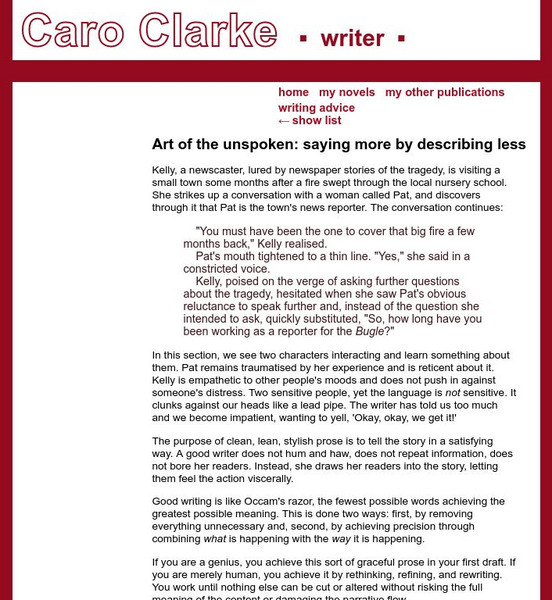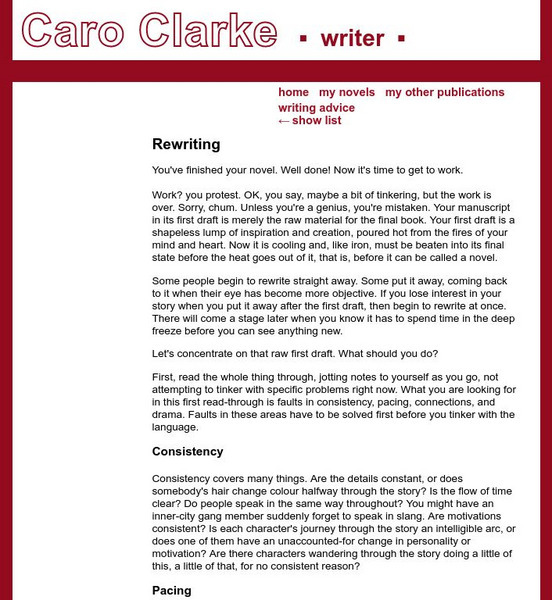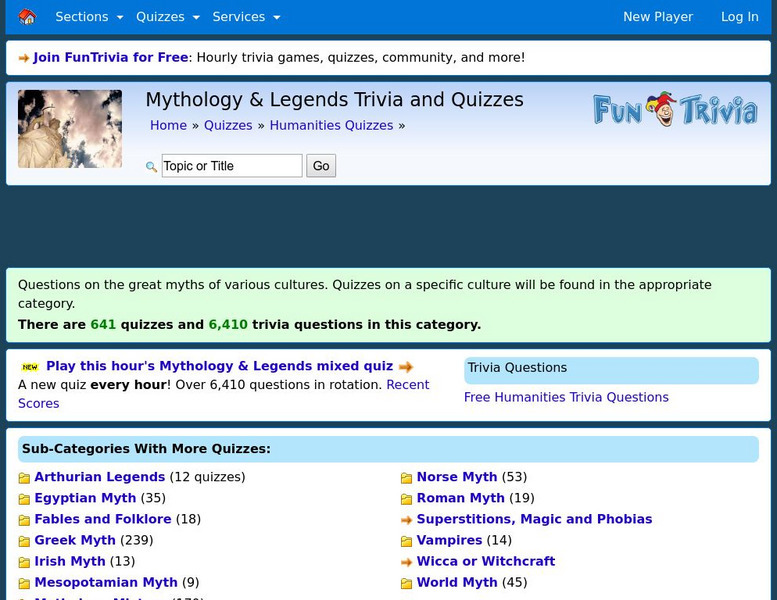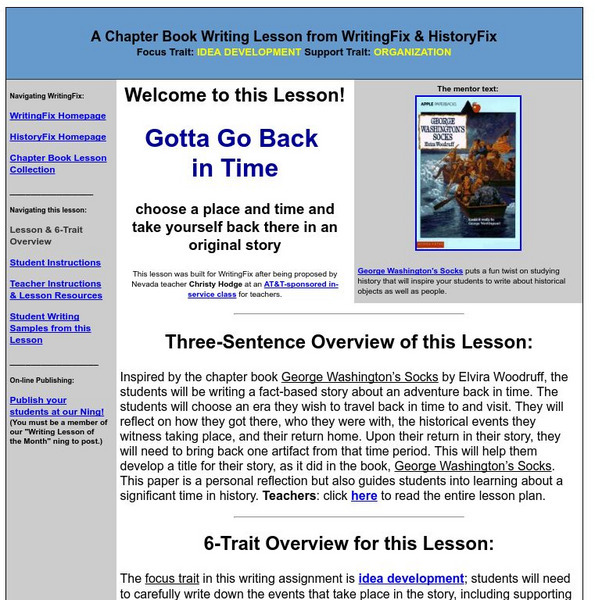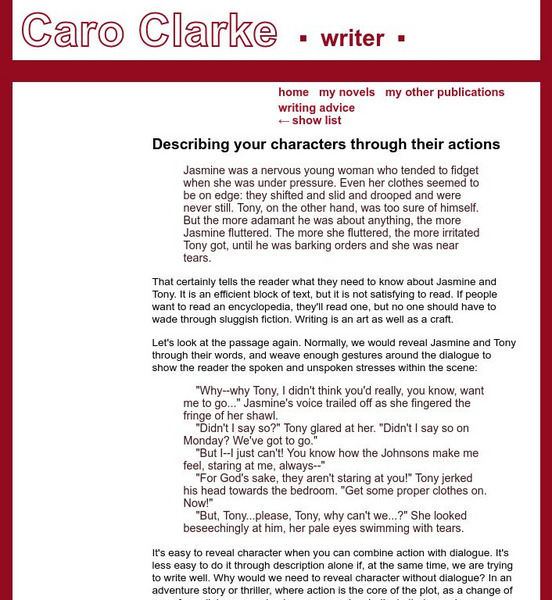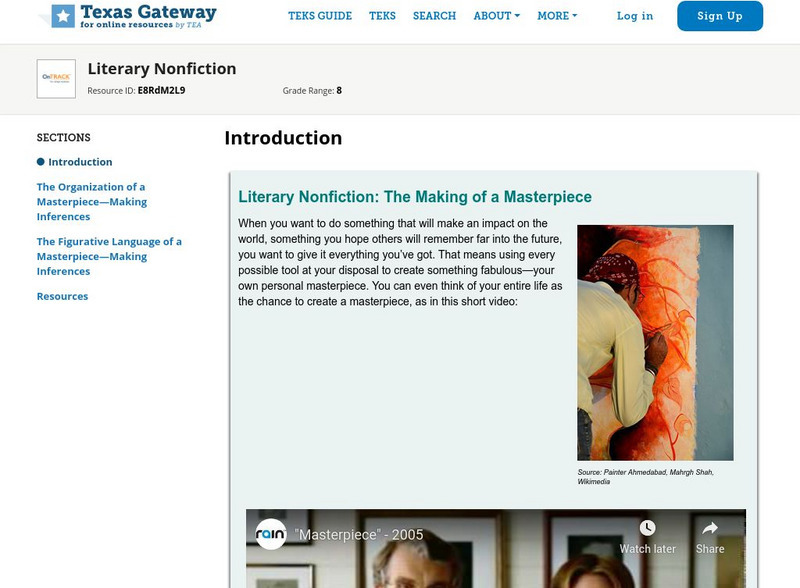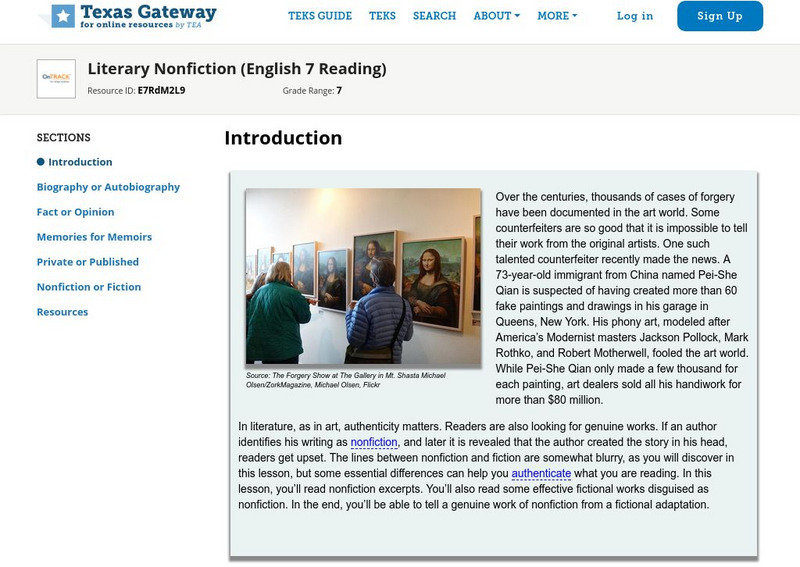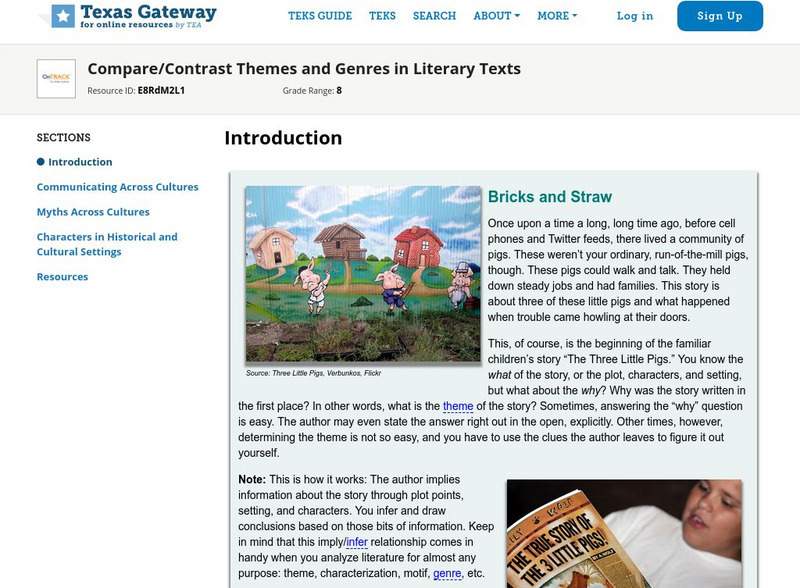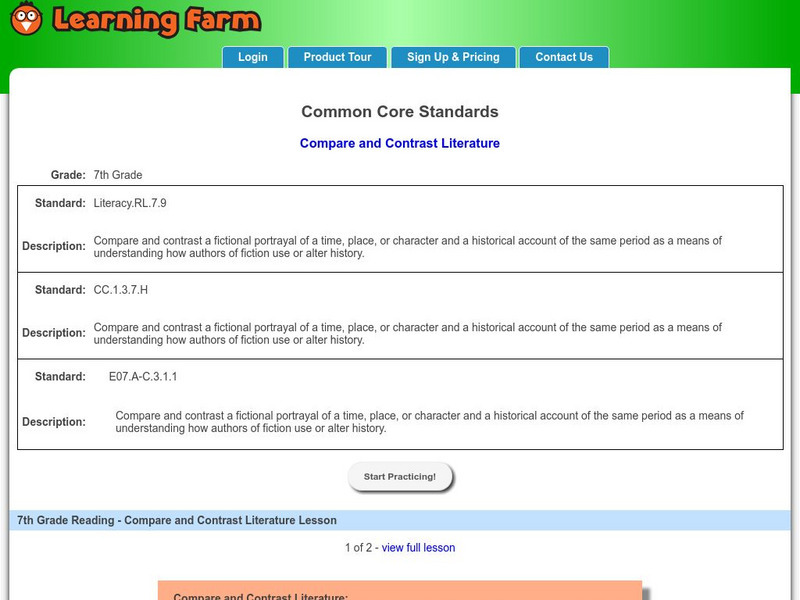Caro Clarke
The Art of the Unspoken: Saying More by Describing Less
This is the thirteenth article in a series that was developed to help the new novel author. This article focuses on how good descriptions aren't necessarily connected with a lot of words, good descriptions are clean and to the point.
Caro Clarke
Historical Fiction: Who Rules?
This is the fifteenth article in a series designed to help the new novel author. This article focuses on the genre of historical fiction and the role of the author. Is the author a researcher or a story-teller?
Caro Clarke
Rewriting
This is the 17th article in a series that helps the new fiction author with the final step--revision.
Fun Trivia
Fun Trivia: Mythology & Legends Trivia Quizzes
FunTrivia.com contains thousands of self-grading quizzes over various topics. The "Mythology and Legends" section contains 263, many of which are suitable for classroom use.
Harold D. Underdown
Writing Young Adult and Children's Fiction and Fantasy
A great article concerning writing children's literature, especially in the area of fantasy or science fiction. The author provides information concerning how to develop characters, creating literary elements, and discusses some pitfalls...
Sophia Learning
Sophia: Selecting Topics for Literary Analysis
A series of three PDF documents providing definitions of commonly used terms when preparing to write a literary analysis, explaining how to comment on a literary text, and demonstrating the process of analyzing the literary text "Hills...
Other
Fiction Writing Tips: Creating a Vivid Setting
Some excellent guidelines to consider when evaluating your setting in a short story or novel. Discusses the importance of setting, some examples, as well as practical advice in setting your story. W.11-12.3d Sensory/precise lang narratives
Caro Clarke
Caro Clarke: Description: What's It For?
This is the twelfth article in a series that is designed to help the new novel writer. This article focuses on how to effectively use descriptions in any writing.
Mythweb
Mythweb: Teaching Tips From Mythweb
"Teaching Tips from Mythweb" features lesson ideas for integrating mythology into the writing and reading curriculums of all grade levels.
Writing Fix
Writing Fix: Gotta Go Back in Time
Inspired by George Washington's Socks by Elvira Woodruff, learners will write in the historical fiction genre.
Caro Clarke
Writing Advice: Where to Start?
This writing tutorial focuses on helping the aspiring author find a good place to start on his or her fiction.
Caro Clarke
Describing Your Characters Through Their Actions
This is the tenth in a series of articles designed to help the new novel author. This article focuses on how to develop characters through their actions instead of simply relying on dialogue and description of thoughts. W.11-12.3d...
Texas Education Agency
Texas Gateway: Analyze Point of View in Literary Texts/fiction
Identify and understand an author's choice of point of view, including limited versus omniscient and subjective versus objective.
Texas Education Agency
Texas Gateway: Analyze the Central Characters in Literary Text/fiction
Learn how the central characters' qualities influence theme and resolution of the central conflict.
Texas Education Agency
Texas Gateway: Compare/contrast Themes and Genres in Literary Texts
You will learn how to analyze, make inferences, and draw conclusions about theme and genre in different cultural, historical, and contemporary contexts and provide evidence from the text to support your understanding.
Washington State University
Washington State University: Timeline of American Literature & Events, Pre 1650 1929
Timeline of the social, political, and literary history of America from pre-1650 through 1929. Contains information on writers of the periods, along with links to related websites. Click on the time period to see the information for that...
Exploring Ancient World Cultures
Exploring Ancient World Cultures: Literature and the Middle Time
This is an essay from the University of Evansville discussing the evolution of the Middle Ages and the formation of various languages that would yield literature.
Texas Education Agency
Texas Gateway: Literary Nonfiction
Learn how to analyze literary nonfiction, particularly speeches, by making inferences and drawing conclusions based on evidence in the text.
Texas Education Agency
Texas Gateway: Literary Nonfiction
[Accessible by TX Educators. Free Registration/Login Required] Identify the literary language and devices used in memoirs and personal narratives and compare their characteristics with those of an autobiography.
Texas Education Agency
Texas Gateway: Literary Nonfiction (English 7 Reading)
[Accessible by TX Educators. Free Registration/Login Required] Learn how to describe the structural and substantive differences between an autobiography or diary and a fictional adaptation of it.
TES Global
Blendspace: Connection: Historical Fiction to Nonfiction
A learning module with fifteen links to slides, websites, videos, websites, and quizzes about linking historical fiction and nonfiction texts.
Texas Education Agency
Texas Gateway: Compare/contrast Themes and Genres in Literary Texts
In this lesson, you will learn how to compare and contrast themes and genre across history and cultures.
East of England Broadband Network
East of England Broadband Network: About Myths and Legends
Here you will read a brief definition of what a legend is, a myth, and a folktale and how they are different from each other.
Learning Farm
Learning Farm: Compare and Contrast Literature
Students will learn how to compare and contrast passages from different time periods. Analyzing the similarities and differences of in the way authors show a historical time, place, or a character gives the reader a broader understanding...


